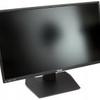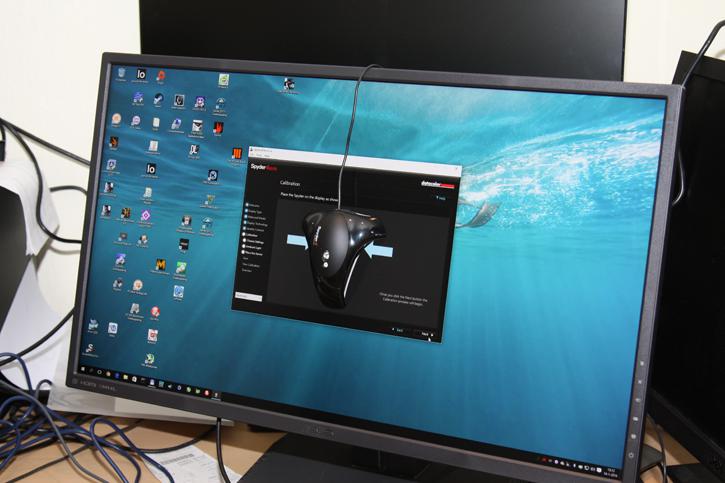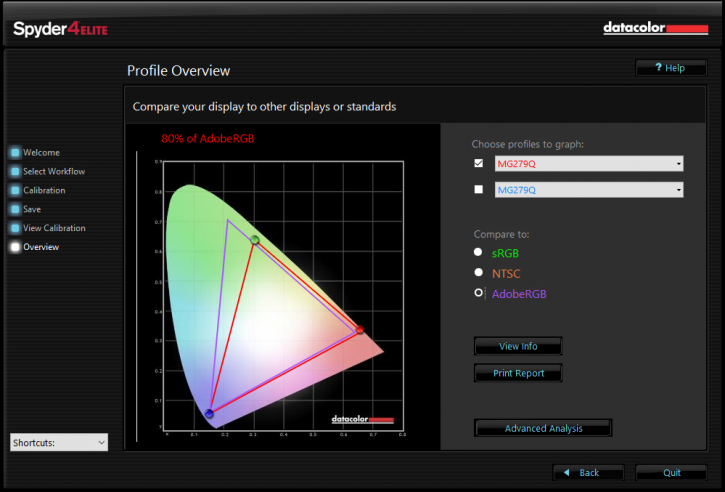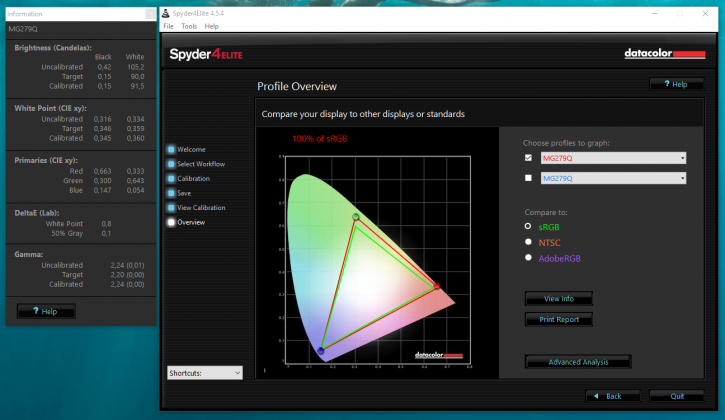Color Accuracy and Screen Uniformity
Color space and Screen Uniformity
We run our tests for Color Space and Screen Uniformity calibrated when mentioned. Uncalibrated performance means the out-of-the-box settings a monitor ships with. Calibrated performance is what results after the monitor has been put through our Spyder4Elite calibration process. Our aim with calibration is to be at a Gamma of 2.2 with a 6500k colour temperature and a 90cd/m2 brightness. Luminance is candela per square metre (cd/m2) also described as "nit".
For our testing we make use of Spyder4Elite hardware and software.
Color Space
Calibrated results demonstrate what the monitor is capable of when tuned correctly but these results have somewhat limited relevance to most consumers who will not calibrate their monitors. Calibrating monitors is a bit of a discussion though, many people out there that see a calibrated screen will literally get nauseous from the outcome. It is however a scientifically precise standard that we'll follow as a reference baseline. Remember, you can always set color / contrast and brightness precision to your own personal preference anyway. The MG279Q, both uncalibrated and calibrated, fills 80% of the AdobeRGB color gamut.
sRGB then, the MG279Q fills 100% of the more limited sRGB color space. Again, there was little to no difference between calibrated and uncalibrated performance in terms of ability to cover the sRGB and AdobeRGB spaces. Asus does quite well here. Gamma uncalibrated was spot on at 2.24 and remained at that number after calibration.
Panel color uniformity
The thesis behind screen uniformity is how the image is distributed across the screen. A uniform screen displays an image which remains consistent in terms of clarity, color and brightness at all points across the display area.
We can measure from 0 to 100% brightness. But we think you'll stick at roughly 50~67% brightness so these two setups we'll put to the test. The MG279Q's screen color uniformity (the same colors measured at nine different parts of the screen) is fairly consistent until we hit the bottom corners, which we measured at both 50 and 67% brightness.
Panel Luminance uniformity
A screen can be a non-uniform screen. On an all-white background such a screen has a somewhat dirty appearance, with things like banding visible. However, as bad as this sounds it may not noticeably affect the image when looking at colored content like your desktop and/or gaming.
Panel luminance or brightness uniformity pretty much tells us how well the screen is lit up by the edge lit LEDs and where it is brighter compared to other spots. We measure at nine hotspots on the screen, with varying results really. Calibrated or uncalibrated showed very little difference here, you are looking at calibrated results.
There's a fair bit of luminance variation across the screen. The upper segment of the screen is darker than the mid central point. Under a value of 15% the difference is a hard thing to see/detect. However with an IPS screen you may expect up to 25 percent deviation, the Asus screen is well within such margins.








